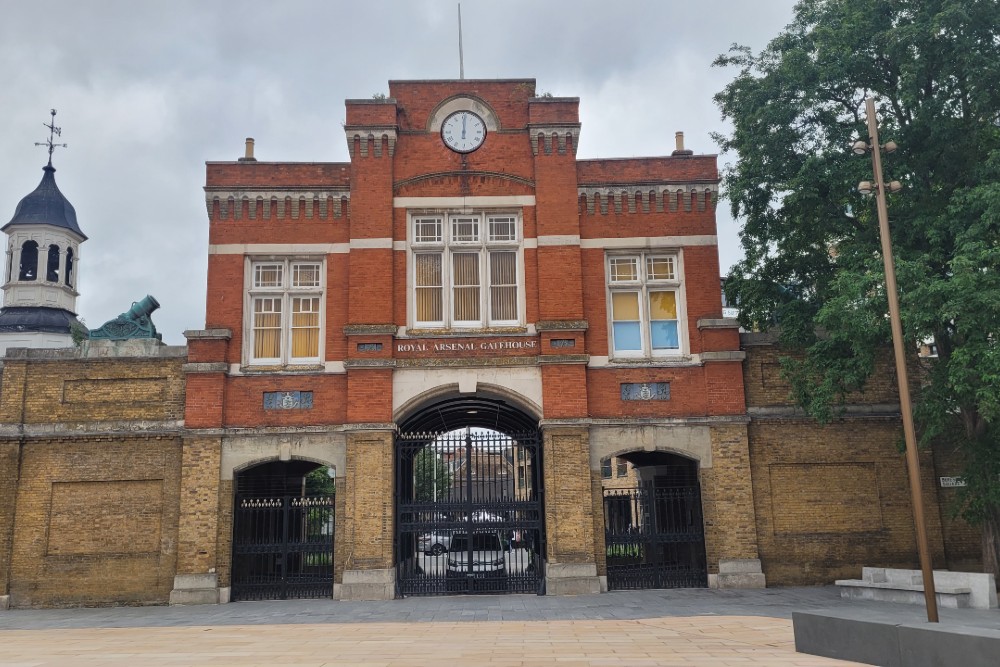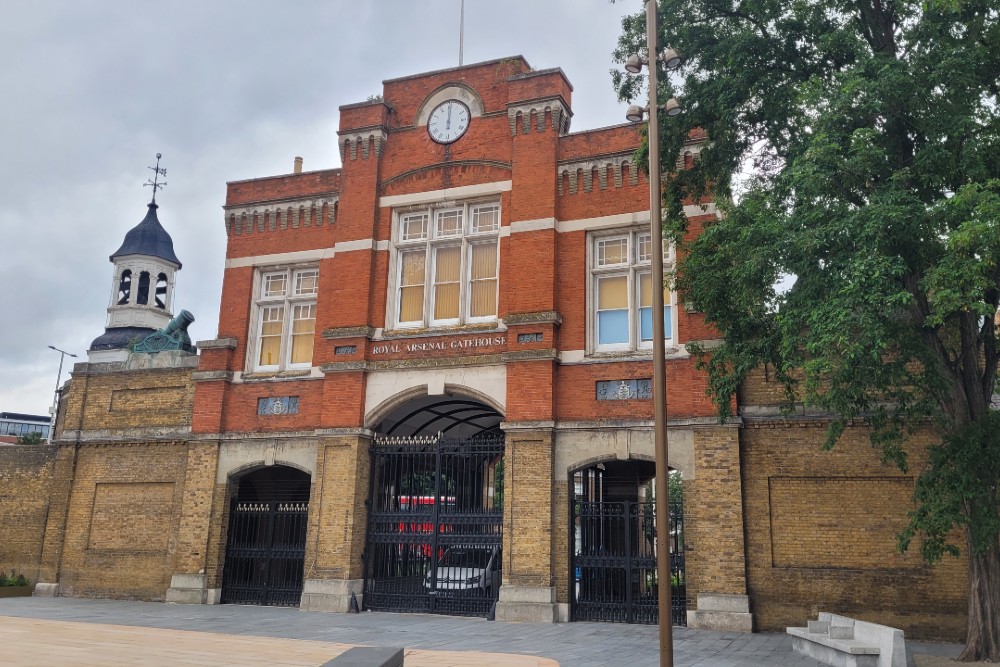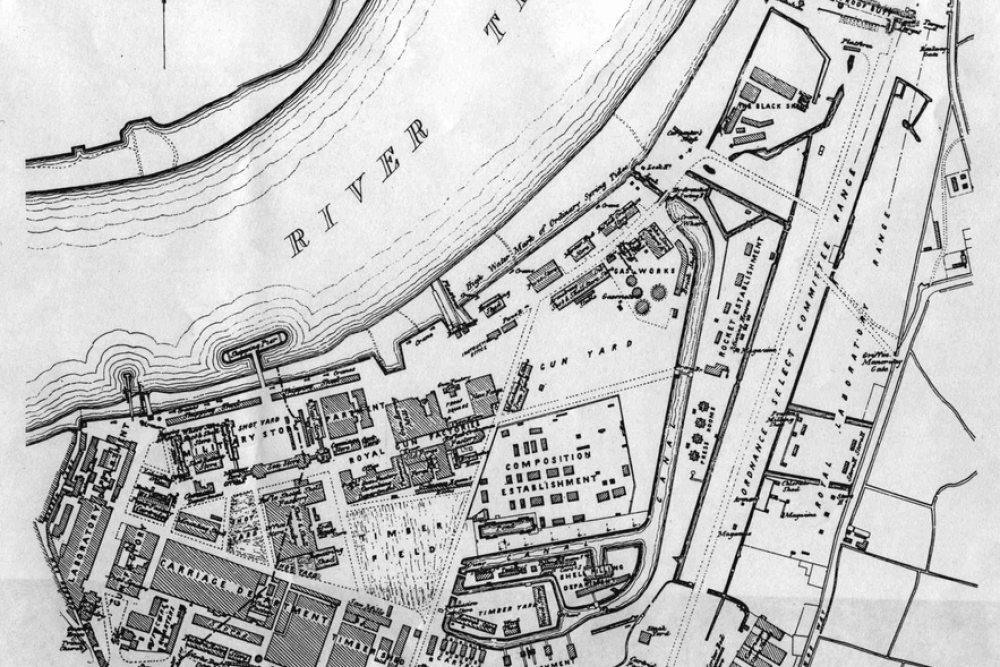Royal Arsenal Woolwich
The Royal Arsenal at Woolwich at its peak was 3.5 miles long. 1 mile wide covering 1,300 acres and employing 100,000 people.
Steeped in history, Royal Arsenal Riverside’s military heritage dates back to the establishment of the Woolwich Dockyard in 1512 for the construction of the Henry VIII’s flagship ‘Henri Grace a Dieu’.
The Royal Brass Foundry was built in 1716 & the Arsenal was born. By the time George III paid his first visit to Woolwich in 1773, the site was home to the Royal Regiment of Artillery and the Roya Military Academy as well as workshops and factories for the manufacture, proof, inspection and storage of cannon and shot.
The Napoleonic and Crimean Wars increased activity on the site, which expanded eastwards. By 1907 the Royal Arsenal covered 1,285 acres and stretched for three miles along the Thames. Arsenal football club was founded as a munition’s workers’ team known as the Dial Arch Square Football Club on the site in 1886 and moved to the Arsenal Stadium in Highbury in north London in 1913.
The Royal Arsenal reached its peak of production during the First World War, when it employed close to 80,000 people. During the Second World War production was distributed among other Royal Ordnance Factories nationwide. Even so, Woolwich saw a high increase in manufacturing activity. Following World War II, output diminished and attention soon switched to focussing on the production of civilian requirements such as railway wagons and knitting frames.
However, in the post-war years, changes in technology and the nature of warfare led to a decrease in operations and it finally closed as a factory in 1967 and in 1994 the Royal Arsenal ceased to be a military establishment and the freehold was passed to the Greater London Council (now GLA).
After years of neglect, Berkeley entered into partnership with the London Development Agency, English Heritage and the Royal Borough of Greenwich in 2000 to transform the isolated brownfield site. Part of this work has seen the one of the largest concentrations of Grade I and Grade II listed buildings converted for residential use in Britain. Around 28 buildings remain from the original Royal Arsenal complex including 16 Grade II listed buildings, six Grade II* buildings and the Grade I listed Royal Brass Foundry, some dating from the 17th century.
In partnership with Historic England, Berkeley has sensitively repaired and converted these buildings to new uses. Derelict structures have been given a new lease of life as converted homes or for commercial and cultural purposes. Enhancement of the conservation area also includes the restoration of 560m of listed façades.
Do you have more information about this location? Inform us!
Source
- Text: Sharky Ward
- Photos: Anthony (Sharky) Ward (1, 2), Unknown cartographer, 1877, Public domain, via Wikimedia Commons (3)
Nearby
Museum
Point of interest
- Information Board Next of Kin Memorial Plaques - Woolwich
- James Clavell Square, Woolwich - Woolwich
- Rifle Shell Factory Gateway, Woolwich Arsenal - Woolwich
Monument
- Memorials St. Peter's Church - Woolwich
- Statue of Arthur Wellesley, 1st Duke of Wellington - Woolwich
- War Memorial Cooperative Society - Woolwich
Cemetery
- Commonwealth War Grave St. Thomas Churchyard - Woolwich (London)
- Commonwealth War Graves Charlton Cemetery - Greenwich
- Commonwealth War Grave St. Nicholas Churchyard - Plumstead







